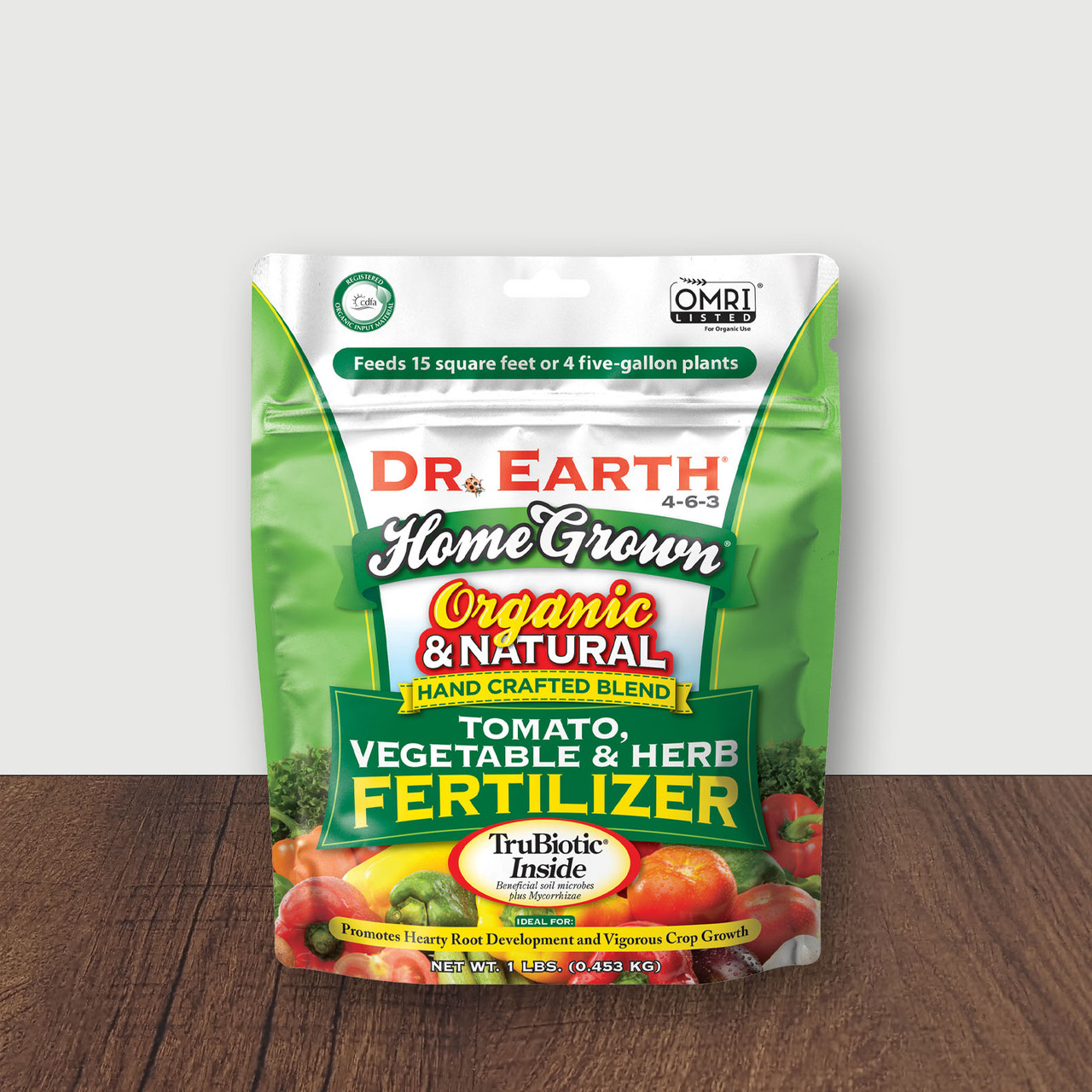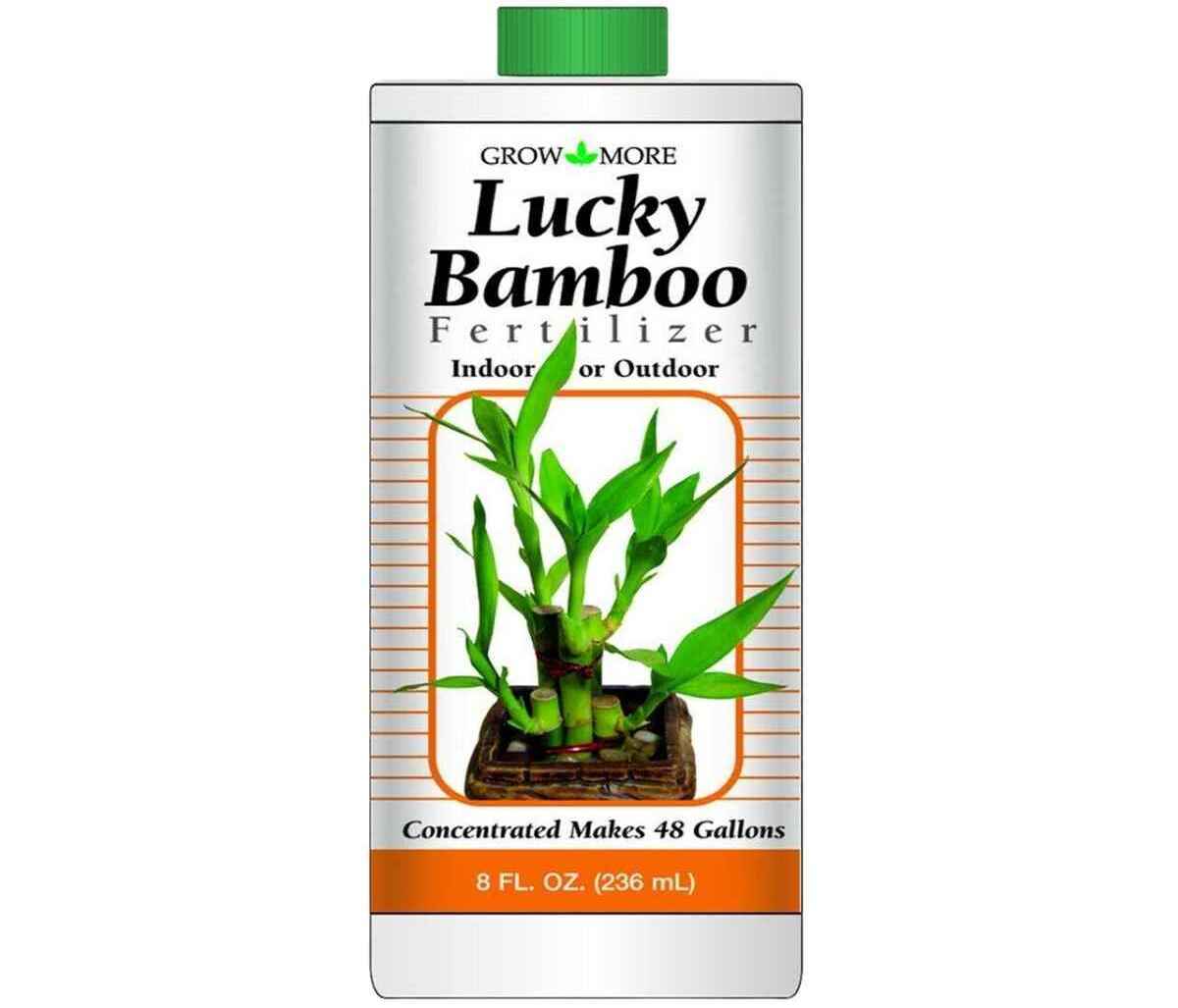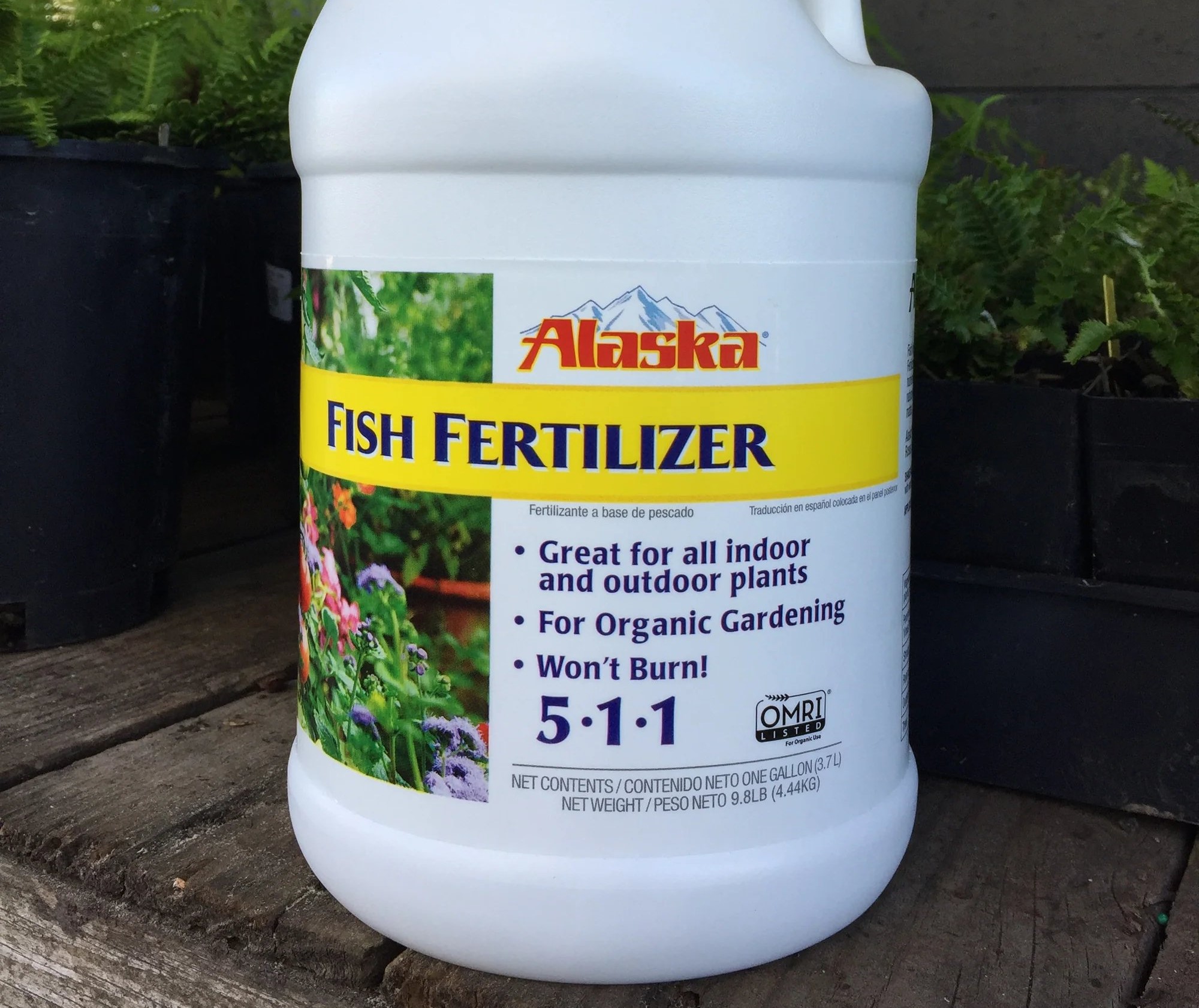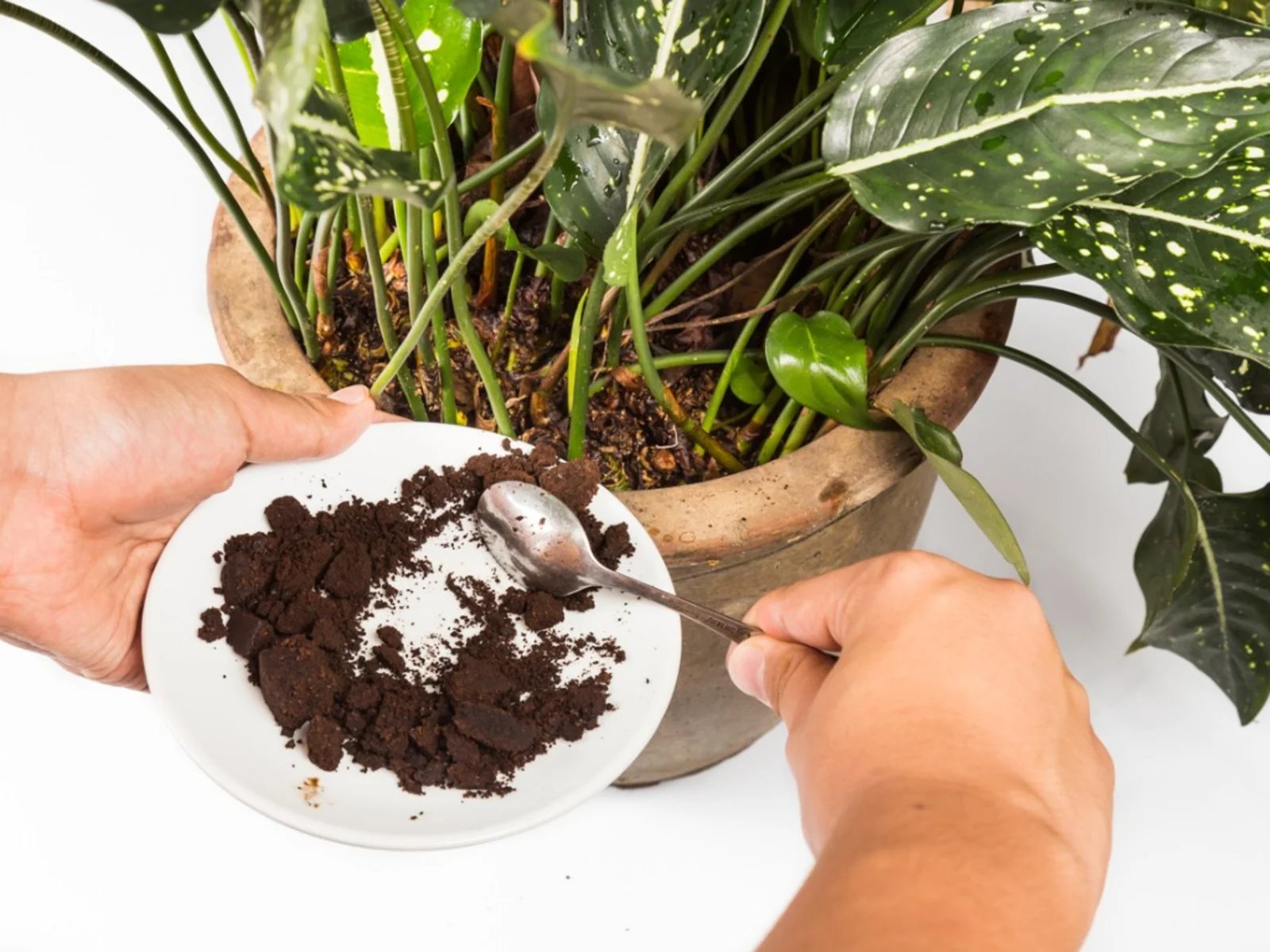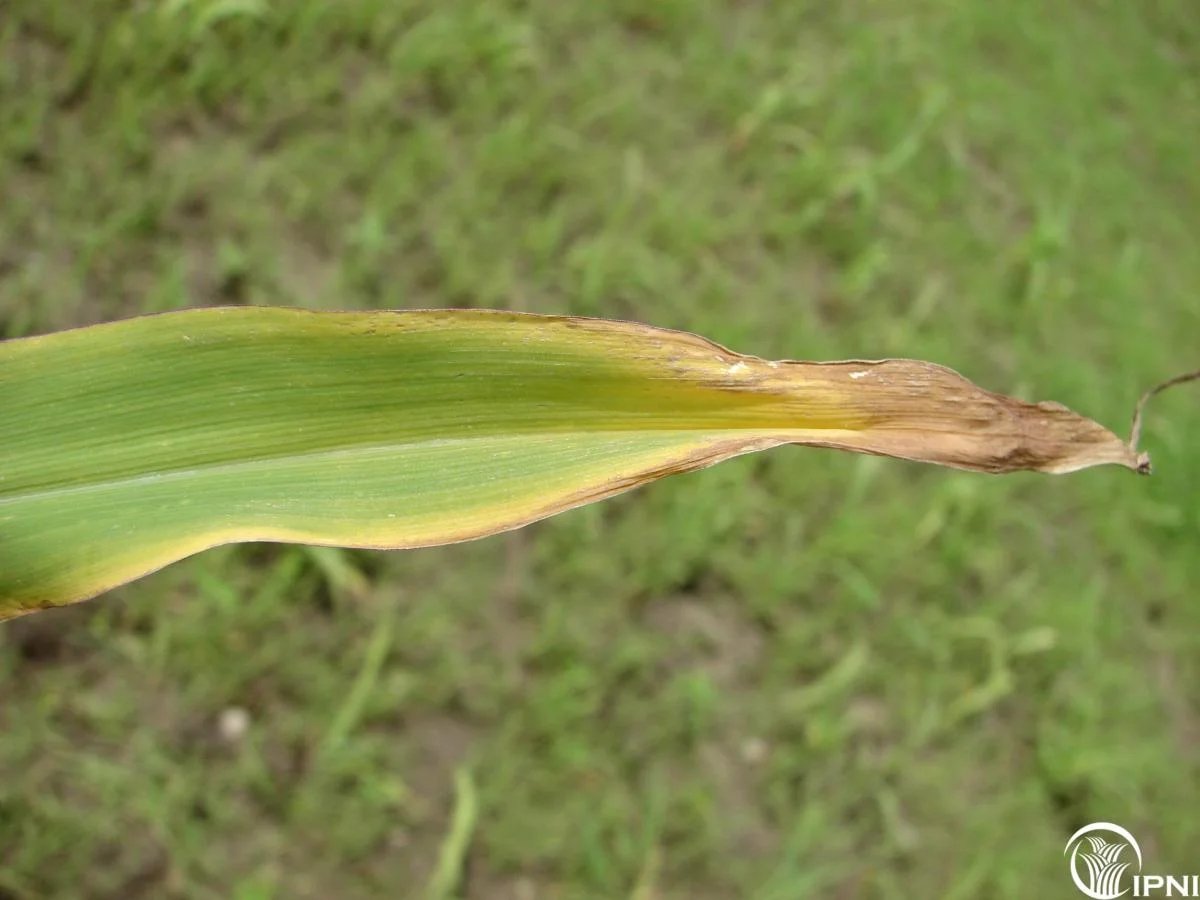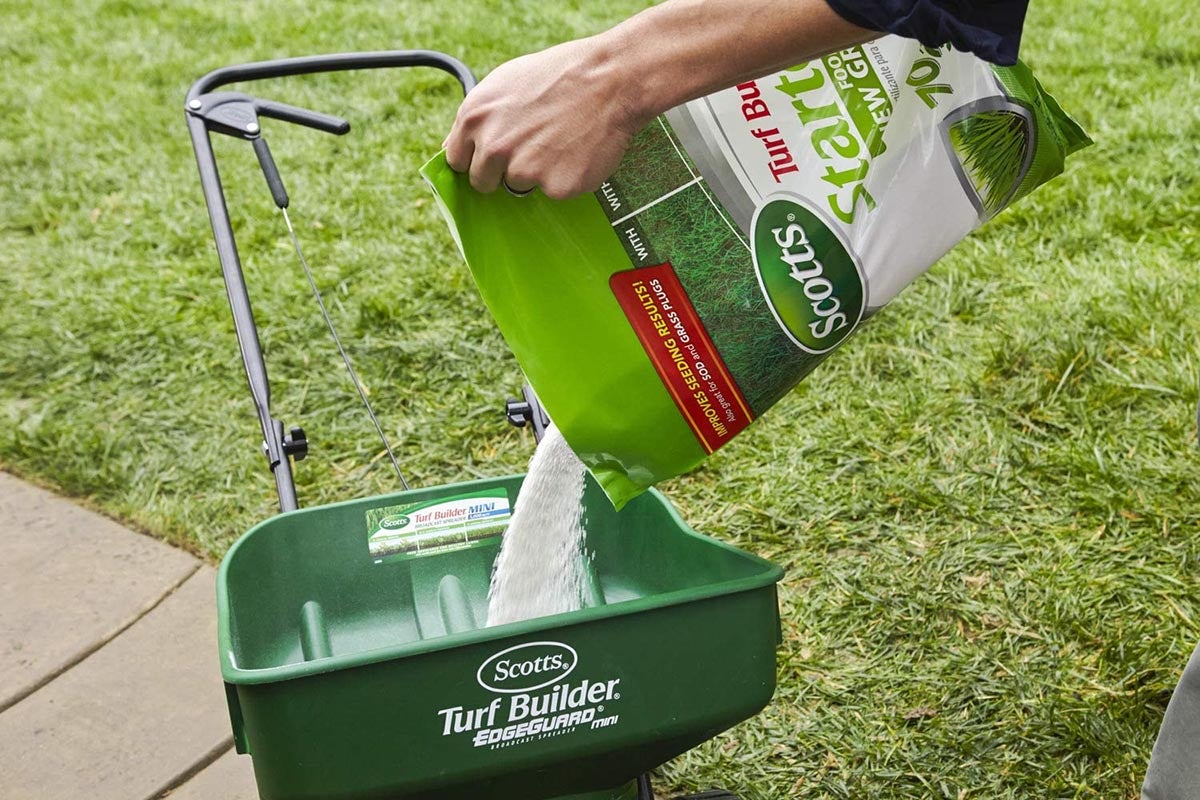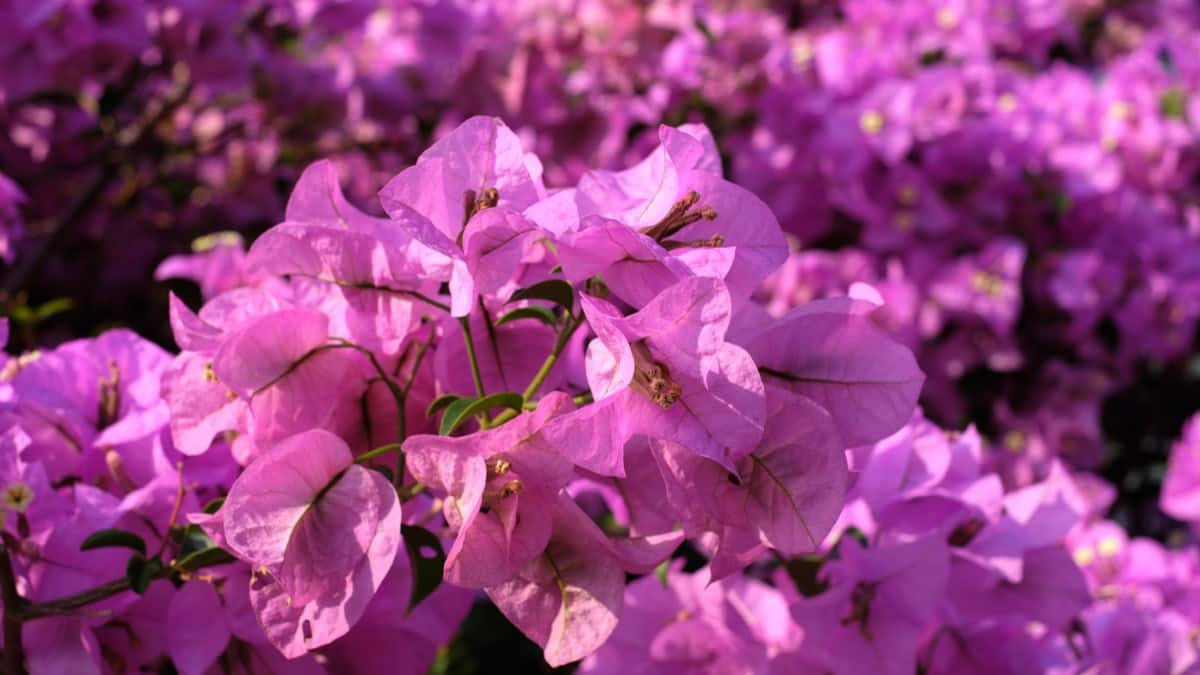Home>Gardening Tips and Tricks>Eco-Friendly Gardening>How To Use Bamboo Fertilizer
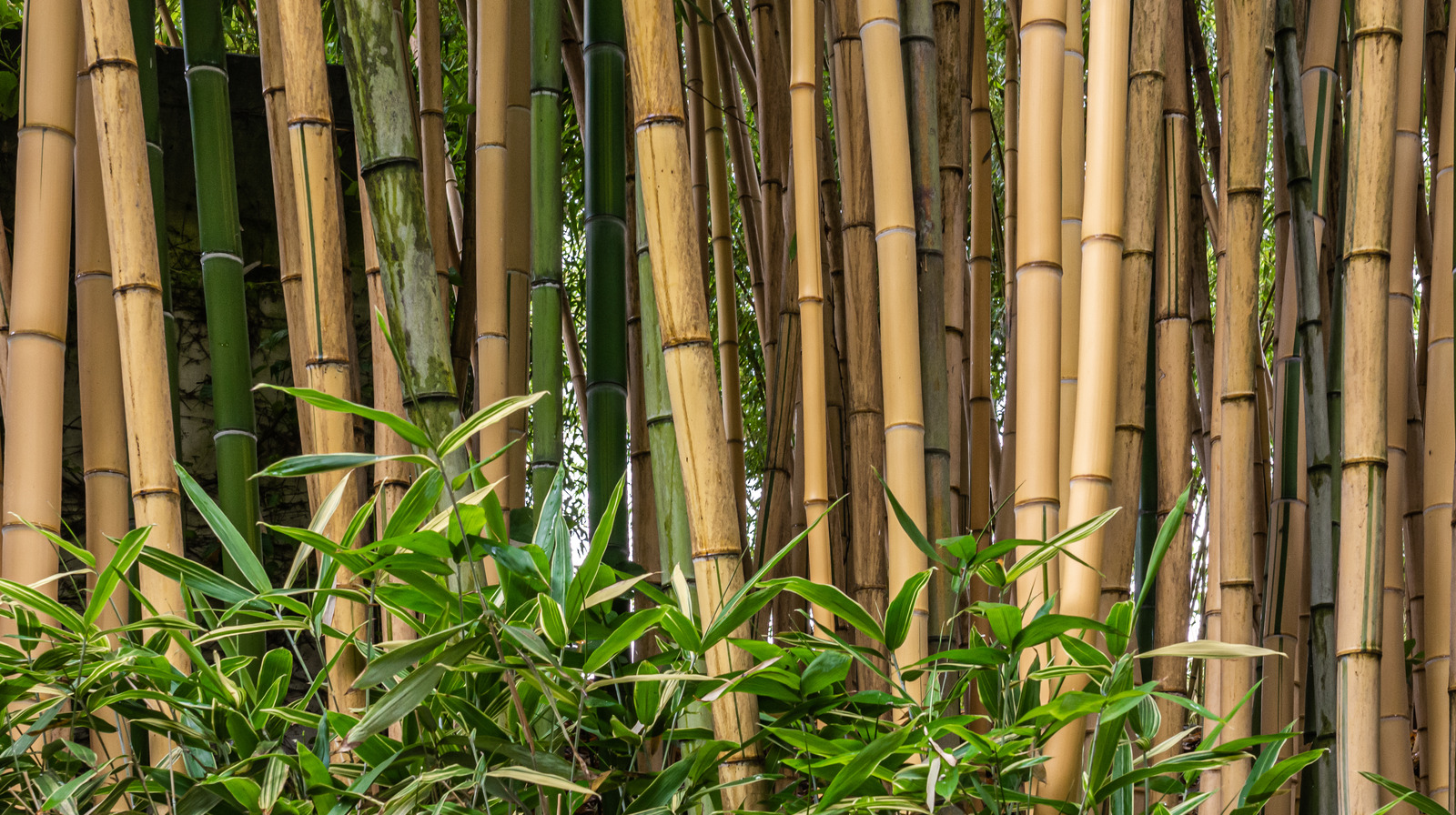

Eco-Friendly Gardening
How To Use Bamboo Fertilizer
Modified: January 22, 2024
Learn how to use eco-friendly bamboo fertilizer for your gardening needs, promoting sustainable and environmentally-friendly practices.
(Many of the links in this article redirect to a specific reviewed product. Your purchase of these products through affiliate links helps to generate commission for Chicagolandgardening.com, at no extra cost. Learn more)
Table of Contents
- Introduction
- Benefits of Bamboo Fertilizer
- Types of Bamboo Fertilizer
- When to Apply Bamboo Fertilizer
- How to Choose the Right Bamboo Fertilizer
- Preparing the Soil for Fertilization
- Applying Bamboo Fertilizer
- Frequency and Amount of Fertilizer Application
- Watering and Maintenance After Fertilization
- Common Mistakes to Avoid When Using Bamboo Fertilizer
- Conclusion
Introduction
Welcome to the world of eco-friendly gardening! If you are passionate about sustainable gardening practices and want to make a positive impact on the environment, then eco-friendly gardening is the way to go. One aspect of eco-friendly gardening that holds great significance is the use of bamboo fertilizer.
Bamboo, with its fast growth rate and versatile uses, has gained popularity as a sustainable and renewable resource. However, to keep your bamboo plants thriving and healthy, it is crucial to provide them with the right nutrients. This is where bamboo fertilizer comes into play.
Using bamboo fertilizer not only promotes healthy growth but also ensures that your bamboo plants are resilient against pests and diseases. In this article, we will explore the benefits of bamboo fertilizer, discuss different types of fertilizers available, and provide guidelines on how and when to apply them.
Whether you are new to eco-friendly gardening or an experienced enthusiast, this comprehensive guide will help you understand the importance of bamboo fertilizer and how to use it effectively. By the end, you will be equipped with the knowledge to enrich your bamboo plants and create a sustainable garden that flourishes.
Benefits of Bamboo Fertilizer
Bamboo fertilizer offers a range of benefits that contribute to the health and vitality of your bamboo plants. Let’s explore some of the key advantages:
- Enhanced Growth: Bamboo fertilizer is specially formulated to provide the essential nutrients that bamboo plants need for optimal growth. These nutrients include nitrogen, phosphorus, and potassium, which are vital for strong stems, foliage development, and overall plant vigor.
- Increased Resilience: Proper fertilization strengthens bamboo plants, making them more resistant to diseases, pests, and environmental stressors. When supplied with adequate nutrients, bamboo plants are better equipped to withstand harsh weather conditions, ensuring longevity and a healthier appearance.
- Improved Root Development: Bamboo fertilizers contain micronutrients like iron, zinc, and manganese, which are crucial for healthy root development. Strong roots not only anchor the plant but also enable efficient nutrient absorption and water uptake, ultimately enhancing overall plant health.
- Higher Culm Production: Culms, or bamboo shoots, are the primary sources of new growth in bamboo plants. By using bamboo fertilizer, you can significantly increase the number and size of culms. This is particularly desirable if you are using bamboo for landscaping, construction, or aesthetic purposes.
- Environmental Sustainability: Bamboo fertilizer is often made from natural, organic ingredients, which makes it an eco-friendly choice. By using organic fertilizers, you reduce the risk of harmful chemicals seeping into the soil or water systems, ensuring a safer environment for both plants and organisms.
By utilizing bamboo fertilizer, you can experience these benefits firsthand and witness the transformation of your bamboo plants into vibrant, flourishing specimens. The next section will delve into the various types of bamboo fertilizer available, helping you choose the one that best suits your specific needs.
Types of Bamboo Fertilizer
When it comes to choosing the right bamboo fertilizer, you’ll find a variety of options available. Each type offers distinct benefits and is formulated to address specific aspects of plant growth. Let’s explore some of the common types of bamboo fertilizer:
- All-Purpose Organic Fertilizer: This type of bamboo fertilizer is a popular choice among eco-conscious gardeners. It is made from natural ingredients like compost, animal manure, and plant-based materials. All-purpose organic fertilizers provide a well-rounded mix of nutrients, promoting overall plant health and growth.
- Nitrogen-Rich Fertilizer: Nitrogen is crucial for lush green foliage and robust stem development in bamboo plants. Nitrogen-rich fertilizers are specifically formulated to provide a higher concentration of nitrogen, stimulating quick and vigorous growth. However, excessive nitrogen can lead to weak culms, so it’s important to follow the recommended application rates.
- Slow-Release Fertilizer: Slow-release fertilizers are designed to gradually release nutrients over an extended period, ensuring a steady and sustained supply of essential elements. This type of fertilizer is ideal for bamboo plants as it prevents nutrient leaching and reduces the risk of over-fertilization.
- Organic Liquid Fertilizer: Organic liquid fertilizers offer a convenient and quick way to provide nutrients to bamboo plants. They are usually derived from natural sources like seaweed, fish emulsions, or compost tea. Organic liquid fertilizers are easily absorbed by the roots and can be applied through foliar spraying as well, allowing for efficient nutrient uptake.
- Specialty Fertilizers: Depending on specific needs, you may find specialty fertilizers tailored for bamboo plants. These can include formulas for bamboo grown in containers, bamboo grown indoors, or fertilizers for specific bamboo varieties. These specialty fertilizers address the unique requirements of different bamboo species and growing conditions.
When choosing a bamboo fertilizer, consider factors such as the nutritional needs of your bamboo variety, soil composition, and environmental considerations. Always follow the instructions provided by the manufacturer to ensure proper application and optimal results for your bamboo plants.
When to Apply Bamboo Fertilizer
Timing is crucial when it comes to applying bamboo fertilizer. Applying it at the right time ensures that your bamboo plants receive the nutrients they need when they need them the most. Here are some guidelines on when to apply bamboo fertilizer:
- Spring: The ideal time to start fertilizing bamboo is in early spring, just as new growth begins. As the weather gets warmer, bamboo plants enter an active growth phase, requiring a boost of nutrients to support their development. Applying fertilizer during this time sets a strong foundation for healthy growth throughout the season.
- Summer: During the summer months, bamboo plants experience their most vigorous growth. To support this growth and maintain their vitality, it’s beneficial to continue fertilizing. Applying a balanced fertilizer during mid to late summer can provide the necessary nutrients to fuel ongoing development and ensure a steady supply of energy.
- Fall: In the fall, bamboo plants start to prepare for winter dormancy. This is the time when bamboo accumulates energy and nutrients in its rhizomes to sustain itself during the colder months. Applying a slow-release fertilizer during fall helps ensure that the plants have ample reserves to withstand the winter and emerge strong in the following spring.
- Winter: In general, it is not recommended to fertilize bamboo plants during the winter. This is because the plants are dormant and not actively growing. Fertilizing during this time may result in nutrient leaching and can potentially harm the root system. It’s best to wait until the following spring to resume regular fertilization.
While these guidelines provide a general framework, it’s important to consider the specific growing conditions and needs of your bamboo plants. Factors such as climate, soil quality, and the cultivar of bamboo you have will influence the timing and frequency of fertilizer application.
By understanding when to apply bamboo fertilizer, you can ensure that your plants receive the right nutrients at the right time, allowing them to thrive and flourish throughout the growing season.
How to Choose the Right Bamboo Fertilizer
Choosing the right bamboo fertilizer is essential to provide your plants with the nutrients they need for optimal growth and health. Here are some factors to consider when selecting a bamboo fertilizer:
- Nutrient Ratio: Look for a fertilizer with a balanced nutrient ratio, such as a 10-10-10 or 14-14-14 formula. These numbers represent the percentages of nitrogen, phosphorus, and potassium, respectively. A balanced ratio ensures that the plant receives a sufficient amount of each essential nutrient for all-around growth.
- Organic vs. Synthetic: Decide whether you prefer organic or synthetic fertilizers. Organic fertilizers are derived from natural sources and release nutrients gradually, promoting long-term soil health. Synthetic fertilizers, on the other hand, provide nutrients more quickly but have the potential to harm beneficial soil organisms if overused.
- Slow-Release vs. Quick-Release: Consider whether you want a slow-release or quick-release fertilizer. Slow-release fertilizers release nutrients gradually over time, providing a steady supply of nutrients to the bamboo plants. Quick-release fertilizers provide an immediate nutrient boost but may require more frequent applications.
- Micronutrients: Check if the fertilizer contains micronutrients like iron, zinc, and manganese. These elements are essential for overall plant health and can improve the appearance and vitality of your bamboo plants.
- Environmental Impact: Consider the environmental impact of the fertilizer. Opt for fertilizers that are eco-friendly and low in chemicals to minimize harm to the soil, water systems, and beneficial organisms.
Additionally, it’s important to consider the specific requirements of your bamboo variety and the nutritional composition of your soil. Conduct a soil test to identify any nutrient deficiencies or imbalances. This information can guide you in choosing a fertilizer that addresses your specific needs.
Remember to follow the manufacturer’s instructions regarding application rates and frequency. Over-fertilization can be harmful to bamboo plants and the surrounding ecosystem. It’s better to apply less fertilizer than recommended than to overdo it.
By carefully considering these factors, you can select a bamboo fertilizer that meets the needs of your plants, promotes healthy growth, and aligns with your eco-friendly gardening principles.
Preparing the Soil for Fertilization
Before applying bamboo fertilizer, it’s important to prepare the soil to ensure optimal nutrient absorption and utilization by the bamboo plants. Follow these steps to prepare the soil for fertilization:
- Remove Debris: Clear the area around your bamboo plants of any weeds, rocks, or other debris. This allows for better access to the soil and prevents any obstacles that could hinder the fertilizer’s penetration.
- Loosen the Soil: Gently loosen the top layer of soil using a garden fork or a tiller. This helps improve aeration, drainage, and root penetration. Avoid deep tilling, as it can damage the shallow root system of bamboo plants.
- Amend the Soil: If your soil is lacking in organic matter or nutrients, consider adding compost or well-rotted manure to enrich the soil. Incorporating organic matter enhances soil fertility, improves moisture-holding capacity, and promotes overall soil health.
- Check pH Levels: Bamboo plants prefer slightly acidic to neutral soil with a pH range of 6.0 to 7.0. Test the soil pH using a pH testing kit or send a soil sample to a local agricultural extension office. If necessary, adjust the pH by adding sulfur to lower it or lime to raise it.
- Address Drainage Issues: Ensure that the soil has proper drainage to prevent waterlogging, as excess moisture can lead to root rot. If your soil lacks drainage, consider amending it with organic matter, like peat moss or coarse sand, to improve its structure.
By preparing the soil before fertilization, you create an environment that maximizes the benefits of the bamboo fertilizer application. Nutrients can be efficiently absorbed by the roots, leading to healthier and more vibrant bamboo plants.
Keep in mind that different bamboo species may have specific soil preferences, so it’s helpful to research the specific requirements of your bamboo variety. With well-prepared soil, your bamboo plants will be ready to receive the nourishment from the fertilizer for optimal growth and vitality.
Applying Bamboo Fertilizer
Once you have prepared the soil, it’s time to apply the bamboo fertilizer to ensure your plants receive the necessary nutrients for healthy growth. Follow these steps to apply bamboo fertilizer effectively:
- Read the Instructions: Carefully read and follow the instructions provided by the manufacturer of the fertilizer. Each product may have specific guidelines regarding application rates, timing, and frequency.
- Calculate the Amount: Determine the amount of fertilizer you need based on the size and number of bamboo plants you are fertilizing. This can be determined by the fertilizer’s recommended application rate per square foot or based on the specific requirements of your bamboo variety.
- Spread Evenly: Distribute the fertilizer evenly around the base of the bamboo plants. Be cautious not to apply the fertilizer too close to the culms or rhizomes to avoid burning or damaging them. Use a garden rake or your hands to ensure an even distribution of the fertilizer.
- Avoid Fertilizer Contact: Try to keep the fertilizer from coming into direct contact with the leaves or stems of the bamboo plants. If any fertilizer does come in contact with the foliage, make sure to gently rinse it off with water to prevent any potential damage.
- Water Well: After applying the fertilizer, water the soil thoroughly. This helps to activate the fertilizer, allowing the nutrients to penetrate the soil and reach the roots of the bamboo plants. Adequate watering also prevents the fertilizer from burning the roots.
It’s important to note that bamboo plants have a shallow and extensive root system. Therefore, it’s better to provide multiple applications of a smaller amount of fertilizer rather than applying a large amount at once. This ensures a consistent supply of nutrients throughout the growing season without overloading the plants.
Frequency and timing of fertilizer application may vary depending on factors such as the specific bamboo variety, climate, and soil conditions. Be attentive to the signs of nutrient deficiency, such as yellowing leaves or stunted growth, as this may indicate the need for additional fertilizer application.
By applying bamboo fertilizer following these guidelines, you can nourish your plants and support their growth, resulting in healthier, more vibrant bamboo specimens.
Frequency and Amount of Fertilizer Application
The frequency and amount of bamboo fertilizer application are crucial to provide your plants with the right balance of nutrients without overfeeding them. Consider the following factors when determining the frequency and amount of fertilizer application:
- Plant Age: Younger bamboo plants require more frequent fertilization compared to established and mature plants. Generally, newly planted bamboo should be fertilized every 6-8 weeks during the growing season, while established plants may only need fertilization once or twice a year.
- Soil Nutrient Content: Consider the nutrient content of your soil. Conducting a soil test can help identify any deficiencies or imbalances. If your soil lacks essential nutrients, you may need to fertilize more frequently to address these deficiencies.
- Fertilizer Type: Different types of fertilizers have varying release rates. Slow-release fertilizers provide a gradual nutrient release over time, necessitating less frequent applications. Quick-release fertilizers, on the other hand, release nutrients faster and may require more frequent applications to maintain consistent nutrient levels.
- Environmental Factors: Environmental conditions impact plant nutrient uptake. Factors such as temperature, rainfall, and sunlight can affect the rate at which nutrients are absorbed by plants. During periods of heavy rainfall or intense heat, more frequent fertilization may be necessary to replenish washed-out or depleted nutrients.
- Bamboo Variety: Different bamboo varieties have varying nutrient requirements. Some varieties may require more frequent fertilization due to their fast growth rate, while others may be less nutrient-demanding. Research the specific nutrient needs of your particular bamboo variety to ensure optimal fertilization.
When it comes to the amount of fertilizer to apply, it’s important to follow the manufacturer’s instructions. Over-fertilizing can lead to nutrient imbalances, plant stress, and potentially harm the environment. Applying a little less fertilizer than recommended is generally safer than applying too much.
Remember that bamboo plants have a shallow root system, so it is best to apply smaller amounts of fertilizer more frequently rather than a large amount at once. This helps ensure a steady supply of nutrients throughout the growing season without overwhelming the plants or risking nutrient leaching.
By considering these factors and adjusting the fertilizer application frequency and amount accordingly, you can provide your bamboo plants with a balanced and consistent nutrient supply for healthy, robust growth.
Watering and Maintenance After Fertilization
Proper watering and maintenance practices are essential after applying bamboo fertilizer to ensure optimal nutrient absorption and plant health. Follow these guidelines to care for your bamboo plants after fertilization:
- Watering: Adequate watering is crucial to activate the fertilizer and carry the nutrients to the root zone. After applying the fertilizer, water the soil thoroughly to ensure proper nutrient penetration. Keep the soil consistently moist but not waterlogged, as excessive moisture can lead to root rot.
- Mulching: Apply a layer of organic mulch around the base of bamboo plants to help retain soil moisture, suppress weed growth, and regulate soil temperature. Mulch also gradually breaks down and adds organic matter to the soil, enriching its fertility over time.
- Weed Control: Regularly remove weeds around the bamboo plants, as they compete with the bamboo for water, nutrients, and sunlight. Weeds can also harbor pests and diseases that may affect the health of your bamboo plants. Use manual removal or organic weed control methods to minimize chemical use.
- Monitoring: Keep an eye on the growth and appearance of your bamboo plants after fertilization. Look out for signs of nutrient deficiency or excess, such as yellowing leaves, stunted growth, or leaf burn. Adjust fertilizer application or amend soil conditions if needed to maintain a healthy nutrient balance.
- Pest and Disease Control: Regularly inspect your bamboo plants for any signs of pests or diseases. Promptly identify and treat any issues to prevent them from spreading and causing harm to your plants. Utilize organic pest control methods whenever possible to minimize the use of harmful chemicals.
- Regular Maintenance: Bamboo plants benefit from regular maintenance practices such as pruning and thinning. Prune out any dead, damaged, or diseased culms to maintain plant health and aesthetics. Thinning the culms also allows for better air circulation and light penetration, reducing the risk of pests and diseases.
Remember that bamboo plants are resilient but can still benefit from attentive care and maintenance. By properly watering your plants, controlling weeds, monitoring for pests and diseases, and conducting regular maintenance, you can ensure that your bamboo plants thrive and continue to benefit from the nutritional boost provided by the fertilizer application.
Common Mistakes to Avoid When Using Bamboo Fertilizer
Using bamboo fertilizer can greatly benefit your plants, but it’s important to avoid common mistakes that can hinder their growth and health. Here are some common mistakes to avoid when using bamboo fertilizer:
- Over-Fertilization: One of the most common mistakes is applying too much fertilizer. Over-fertilization can lead to nutrient imbalances, excessive growth, and weak culms. Follow the recommended dosage provided by the fertilizer manufacturer and avoid the temptation to apply more, thinking it will yield better results.
- Improper Timing: Applying fertilizer at the wrong time can reduce its effectiveness. Avoid fertilizing bamboo plants during the winter or when they are dormant. Instead, focus on timing your fertilizer applications during the active growing season, mainly in spring and summer, when plants can utilize the nutrients efficiently.
- Ignoring Soil Conditions: Neglecting the quality and composition of the soil can have a significant impact on fertilizer effectiveness. Conduct a soil test to determine the nutrient levels and pH of your soil. This helps you choose the right fertilizer formulation and allows for appropriate adjustments to optimize nutrient uptake.
- Applying Fertilizer to Dry Soil: Applying fertilizer to dry soil can lead to poor nutrient absorption and loss. Water the soil thoroughly before applying fertilizer to ensure it is moist. This helps activate the granules and facilitates nutrient transport to the roots.
- Neglecting Weed Control: Weeds compete with bamboo plants for nutrients and water. Failing to control weeds can diminish the effectiveness of fertilizer application. Regularly remove weeds to reduce competition and enhance the nutrient availability for your bamboo plants.
- Using Incompatible Fertilizer: Not all fertilizers are suitable for bamboo plants. Avoid using fertilizers with high salt content or those containing herbicides, as these can harm your bamboo plants. Additionally, use fertilizers specifically formulated for bamboo or other woody plants to ensure they have the required nutrients.
By avoiding these common mistakes, you can ensure that your bamboo plants receive the right amount of nutrients at the right time, promoting their growth and overall health. Paying attention to proper fertilization practices will help you achieve vibrant and thriving bamboo specimens in your garden.
Conclusion
Incorporating bamboo fertilizer into your eco-friendly gardening practices can yield numerous benefits for your bamboo plants. By providing essential nutrients, bamboo fertilizer promotes healthy growth, increased resilience to pests and diseases, improved root development, higher culm production, and overall environmental sustainability.
When using bamboo fertilizer, make sure to choose the right type of fertilizer based on your plant’s needs and soil composition. Consider factors such as nutrient ratio, organic vs. synthetic options, slow-release vs. quick-release formulas, and the inclusion of micronutrients.
Applying bamboo fertilizer at the appropriate times, such as in early spring and throughout the growing season, ensures optimal nutrient uptake by the plants. Preparing the soil by removing debris, loosening it, and amending it with organic matter creates a fertile environment for the bamboo plants to thrive.
Remember to adhere to the recommended frequency and amount of fertilizer application to avoid over- or under-fertilizing. Provide regular maintenance and care by watering adequately, controlling weeds, monitoring for pests and diseases, and conducting necessary pruning and thinning.
Avoid common mistakes such as over-fertilization, improper timing, neglecting soil conditions, applying fertilizer to dry soil, overlooking weed control, or using incompatible fertilizer.
By following these guidelines and taking the time to understand your specific bamboo variety and growing conditions, you can ensure vibrant and healthy bamboo plants that enhance your garden while maintaining an eco-friendly approach.
Now that you have a comprehensive understanding of how to use bamboo fertilizer, you can confidently embark on your journey of creating a sustainable and flourishing bamboo garden. Happy gardening!

